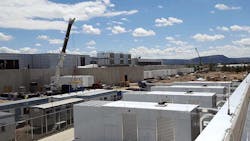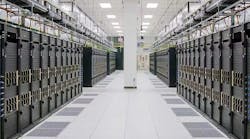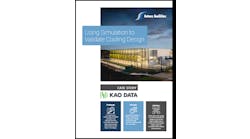In its ongoing super-sizing of its data center campuses, Facebook is going back to the beginning. Facebook will build two new data centers as it expands its campus in Prineville, Oregon, where the company built its very first data center back in 2011.
The expansion project will give Facebook 2.15 million square feet of data center space in Prineville by 2021. It will break ground on the fourth data center building this month, which will begin serving traffic in 2020. Building five at Prineville will break ground in 2018 and begin serving traffic in 2021.
“These new buildings — which total 900,000 square feet, plus 70,000 square feet for an administrative space connecting the two buildings — will represent a capital investment of hundreds of millions of dollars, which is in addition to the more than $1 billion we have already invested in the Prineville Data Center,” said KC Timmons, Facebook’s head of Data Center Operations, West Region
“This translates into keeping construction crews busy for another four years, plus additional full-time jobs as the data halls come online. As of September 2017, the Prineville Data Center supports more than 200 people working full-time, with approximately 75 percent living in Crook County.”
Facebook recently acquired 240 acres of land from Crook County to support the expansion. The additional land purchase has been rumored for several years, and may have been slowed by delays in completing transmission lines to expand Prineville’s power capacity.
An illustration of the expanded Prineville campus once data centers four and five (at upper right) are completed. (Image: Facebook)
The project continues the explosion of Internet infrastructure in Prineville, a town of 9,928 residents on the high plains of central Oregon about 150 miles east of Portland. The town is also home to a major data center campus for Apple, which has built two large data centers and cleared ground to prepare for a third. At this point, it’s a given that Prineville houses at least 100 servers for every human resident.
Facebook opened its first Prineville data center in April, 2011. That first building was 330,000 square feet, while the second building was slightly larger. The newest structure spans 450,000 square feet, about 35 percent larger than the original building. The two new buildings will also average 450,000 square feet.
As it builds increasingly bigger buildings, Facebook is super-sizing its campuses. The buildings on its Altoona, Iowa campus are all larger than the biggest structure in Prineville. The company’s newest campus in Fort Worth, Texas will have room for five massive data center buildings, instead of three. The new campus in Sandston, Virginia will feature a 970,000 square foot building, while the Las Lunas, New Mexico project will house six buildings and nearly 3 million square feet of server space.
Here’s a look at Facebook’s rapidly growing data center campuses around the world:
A Closer Look at the Technology Powering Artificial Intelligence at Facebook
Clonee, Ireland: In this western suburb of Dublin, Facebook is nearing completion on its first two buildings spanning 621,000 square feet, and recently announced plans for a third data center. Brookfield Renewable Ireland will supply the Clonee data center with renewable energy, primarily from wind power.






